Must-Have Design Ideas for Your Dream Kitchen
The kitchen is the heart of every home, and it’s essential to have a functional, beautiful space where you can cook, eat, and entertain. Whether you’re renovating your existing kitchen or building a new home, designing a kitchen that fits your lifestyle and aesthetic preferences is crucial. With so many options available, it can be challenging to determine the best kitchen design for your needs. In this article, we’ll explore some of the best kitchen designs and ideas to inspire you to create your dream kitchen.
Modern Kitchen Design
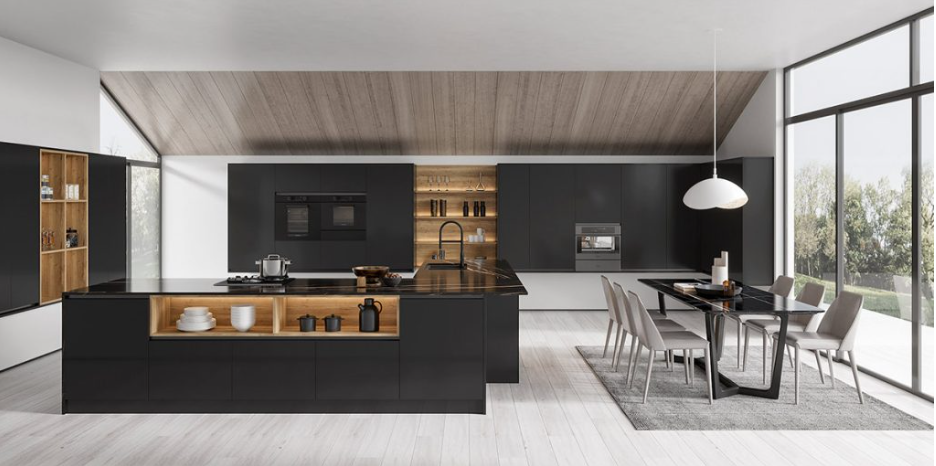
A modern kitchen design is sleek, simple, and uncluttered, featuring clean lines, minimal ornamentation, and the latest technology. This design is perfect for those who want a fresh, contemporary look that’s both functional and stylish. Here are some key features of a modern kitchen:
-
Open Plan Layout
Modern kitchens typically have an open-plan layout, which means the kitchen flows seamlessly into the living or dining area, creating a spacious and airy feel.
-
Simple Color Scheme
Modern kitchens often have a monochromatic color scheme, featuring neutral shades such as white, gray, or black. These colors create a clean and timeless look that will never go out of style.
-
High-Tech Appliances
A modern kitchen design features the latest appliances, including built-in ovens, microwaves, and refrigerators. These appliances are designed to be both functional and stylish, with features like touchscreens and voice control.
-
Minimalist Cabinets
Cabinets in a modern kitchen are typically sleek and streamlined, featuring simple handles or no handles at all. They are often made from high-quality materials such as wood, glass, or metal.
Traditional Kitchen Design
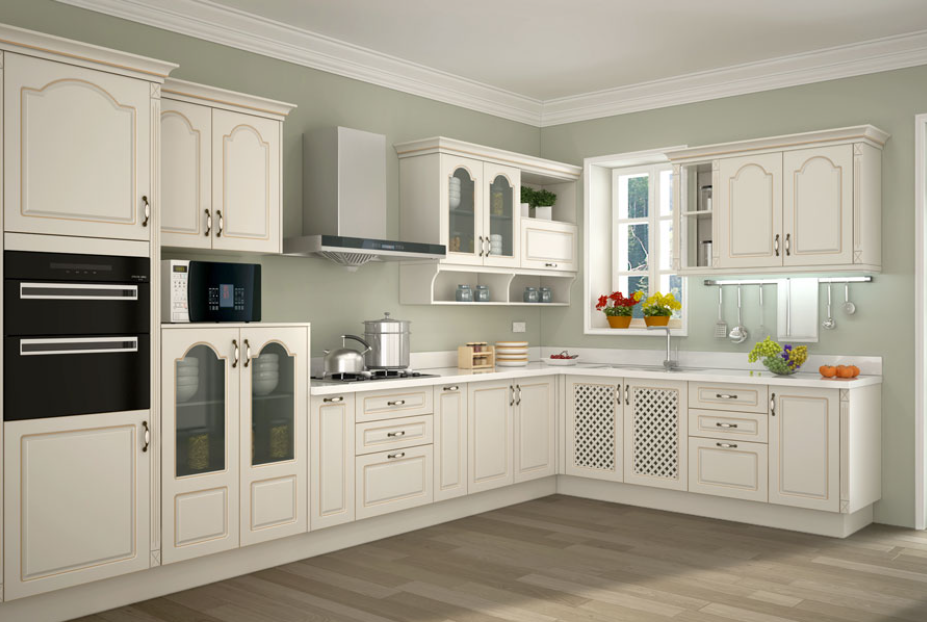
A traditional kitchen design is warm, inviting, and classic, featuring ornate details, natural
materials, and vintage-inspired fixtures. This design is perfect for those who want a cozy, comfortable kitchen with a timeless feel. Here are some key features of a traditional kitchen:
-
Wood Cabinetry
Cabinets in a traditional kitchen are typically made from wood, with ornate details such as raised panels, decorative molding, and brass hardware. These details add character and charm to the space.
-
Natural Materials
A traditional kitchen design features natural materials such as stone or wood for countertops, flooring, and backsplash. These materials add warmth and texture to the space.
-
Vintage Fixtures
Vintage-inspired fixtures such as pendant lights, chandeliers, and faucets add a touch of elegance to a traditional kitchen. These fixtures often feature ornate details such as crystal or brass.
-
Warm Color Scheme
Traditional kitchens often have a warm color scheme, featuring shades of brown, cream, and beige. These colors create a cozy and inviting atmosphere that’s perfect for cooking and entertaining.
Minimalist Kitchen Design
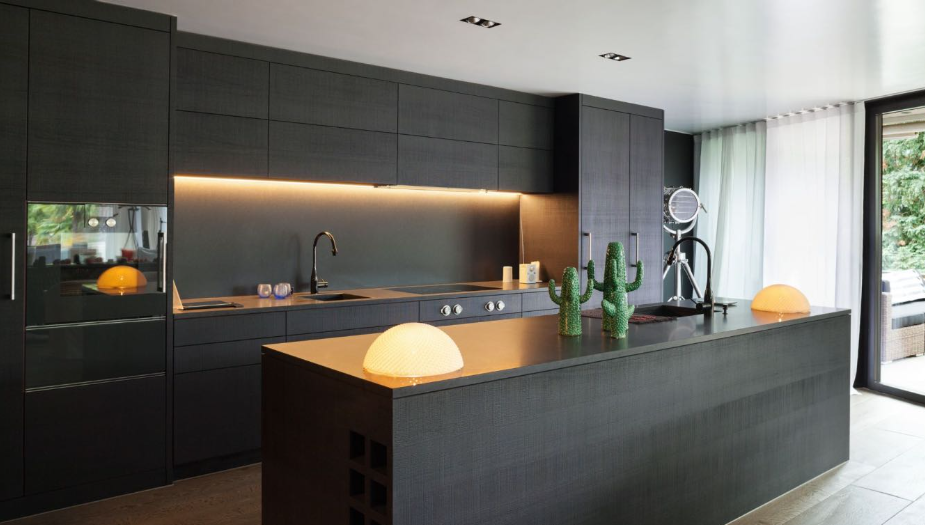
A minimalist kitchen design is simple, functional, and uncluttered, featuring clean lines, neutral
colors, and minimal decoration. This design is perfect for those who want a kitchen that’s both stylish and practical. Here are some key features of a minimalist kitchen:
-
Open Shelving
A minimalist kitchen often features open shelving instead of traditional cabinets, creating a clean and open feel. This also makes it easy to access your dishes and cookware.
-
Neutral Color Scheme
Minimalist kitchens typically have a neutral color scheme, featuring shades of white, gray, or black. These colors create a clean and timeless look.
-
Simple Fixtures
Fixtures in a minimalist kitchen are typically simple and understated, featuring clean lines and minimal ornamentation. For example, a minimalist kitchen might feature a sleek, modern faucet with no decorative accents.
-
Streamlined Appliances
Appliances in a minimalist kitchen are often streamlined and integrated into the cabinetry, creating a seamless look. For example, a refrigerator might be hidden behind a cabinet door, or a range might be built into a countertop.
Rustic Kitchen Design
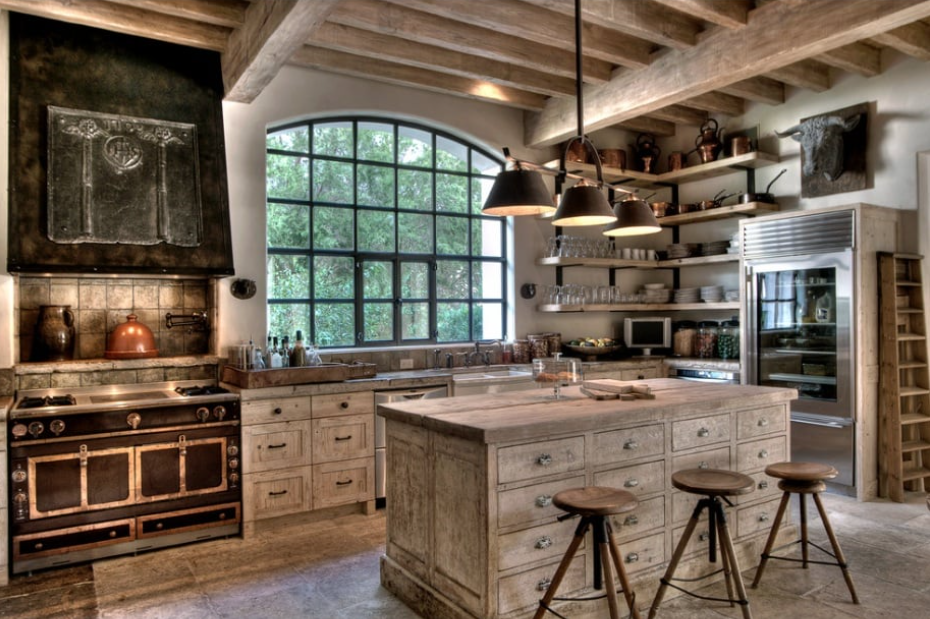
A rustic kitchen design is warm, cozy, and inviting, featuring natural materials, earthy colors, and vintage-inspired fixtures. This design is perfect for those who want a kitchen that’s both comfortable and stylish. Here are some key features of a rustic kitchen:
-
Natural Materials
A rustic kitchen design features natural materials such as wood, stone, and brick for the flooring, countertops, and backsplash. These materials add warmth and texture to the space.
-
Vintage Fixtures
Vintage-inspired fixtures such as pendant lights, chandeliers, and faucets add a touch of charm to a rustic kitchen. These fixtures often feature rustic details such as wrought iron or weathered finishes.
-
Warm Color Scheme
Rustic kitchens often have a warm color scheme, featuring shades of brown, orange, and red. These colors create a cozy and inviting atmosphere that’s perfect for cooking and entertaining.
-
Open Shelving
Like minimalist kitchens, rustic kitchens often feature open shelving instead of traditional cabinets, creating a relaxed and informal feel.
Transitional Kitchen Design
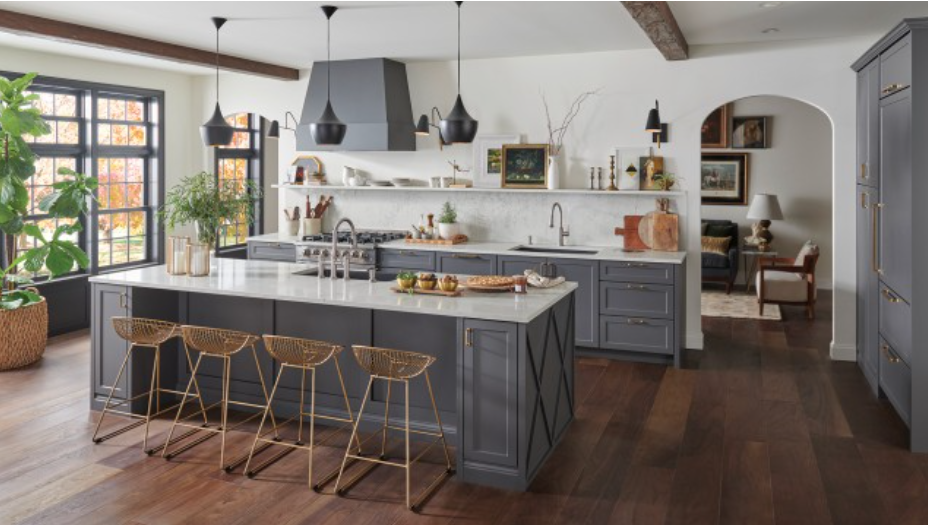
A transitional kitchen design combines the best of both modern and traditional styles, creating a
space that’s both classic and contemporary. This style is perfect for those who want a kitchen that’s both timeless and up-to-date. Here are some key features of a transitional kitchen:
-
Neutral Color Palette
Transitional kitchens often feature a neutral color palette with shades of white, gray, and beige. These colors create a sense of calm and tranquility in the space.
-
Simple Cabinetry
Transitional kitchens often feature simple, clean-lined cabinetry with flat panel doors and minimal ornamentation. This style is both modern and classic, making it a versatile choice for any home.
-
Mix of Materials
Transitional kitchens often combine different materials such as wood, metal, and stone to create a unique and personalized look. For example, a transitional kitchen might feature a marble countertop with a reclaimed wood island.
-
Contemporary Lighting
Contemporary lighting fixtures such as pendant lights and track lighting are often used in transitional kitchens to add a modern touch to the space.
Farmhouse Kitchen Design
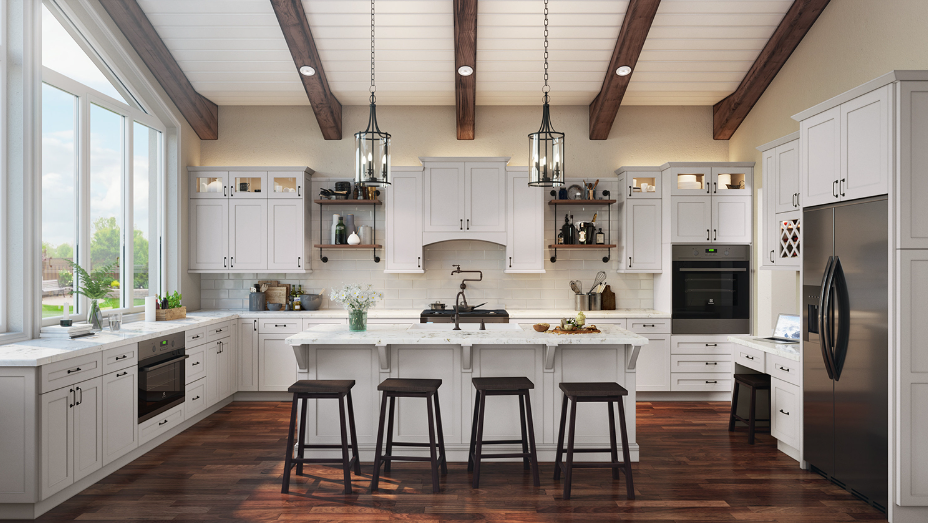
A farmhouse kitchen design is rustic, charming, and inviting, featuring vintage-inspired details
and natural materials. This style is perfect for those who want a kitchen that feels cozy and welcoming. Here are some key features of a farmhouse kitchen:
-
Vintage-Inspired Fixture
Farmhouse kitchens often feature vintage-inspired fixtures such as apron-front sinks, pendant lights, and bridge faucets. These fixtures add a touch of charm and character to the space.
-
Rustic Materials
Farmhouse kitchens often feature rustic materials such as reclaimed wood, brick, and stone for the flooring, countertops, and backsplash. These materials create a warm and inviting atmosphere in the space.
-
Open Shelving
Like rustic kitchens, farmhouse kitchens often feature open shelving instead of traditional cabinets. This creates a relaxed and informal feel in the space.
-
Warm Color Scheme
Farmhouse kitchens often have a warm color scheme, featuring shades of white, cream, and beige. These colors create a cozy and welcoming atmosphere that’s perfect for cooking and entertaining.
Scandinavian Kitchen Design
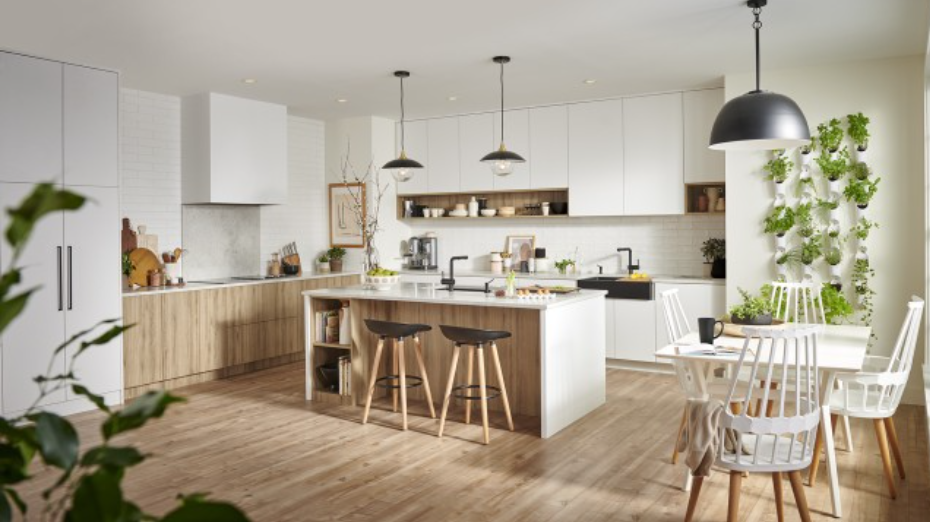
A Scandinavian kitchen design is simple, clean, and functional, featuring light colors, natural
materials, and minimal ornamentation. This style is perfect for those who want a kitchen that’s both modern and cozy. Here are some key features of a Scandinavian kitchen:
-
Light Color Scheme
Scandinavian kitchens often feature a light color scheme with shades of white, gray, and light wood. These colors create a sense of brightness and openness in the space.
-
Natural Materials
Scandinavian kitchens often feature natural materials such as wood, stone, and leather for flooring, countertops, and backsplash. These materials add warmth and texture to the space.
-
Minimalist Cabinetry
Scandinavian kitchens often feature minimalist cabinetry with clean lines and no decorative accents. This style is both modern and functional, making it a popular choice for small homes and apartments.
-
Statement Lighting
Statement lighting fixtures such as pendant lights or chandeliers are often used in Scandinavian kitchens to add a touch of drama to the space.
Mediterranean Kitchen Design
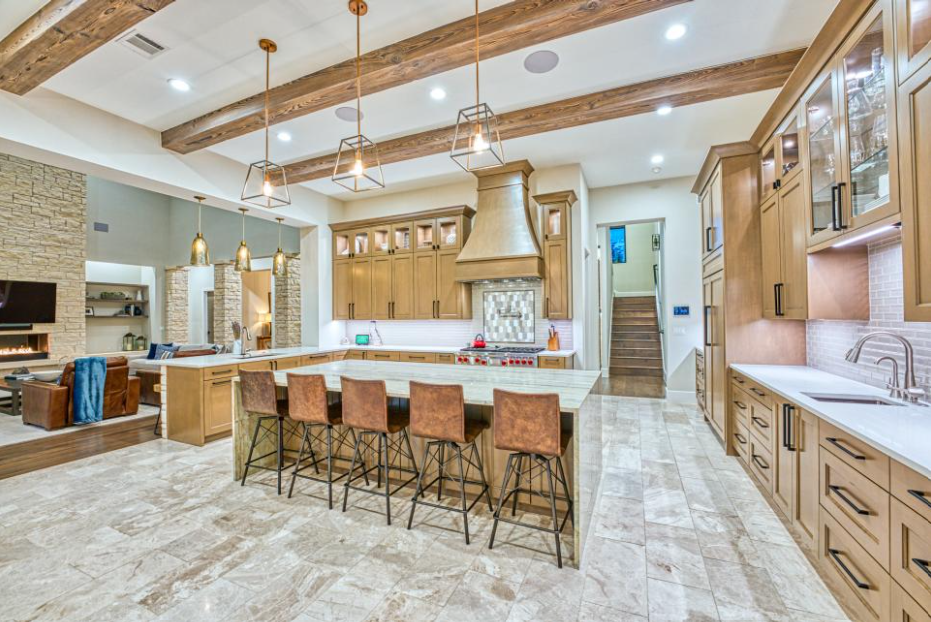
A Mediterranean kitchen design is warm, colorful, and inviting, featuring natural materials, warm
colors, and ornate details. This style is perfect for those who want a kitchen that feels like a vacation home. Here are some key features of a Mediterranean kitchen:
-
Natural Materials
Mediterranean kitchens often feature natural materials such as stone, terra cotta, and wood for flooring, countertops, and backsplash. These materials add warmth and texture to the space.
-
Warm Color Scheme
Mediterranean kitchens often have a warm color scheme, featuring shades of gold, yellow, and red. These colors create a welcoming and sunny atmosphere in the space.
-
Ornate Cabinetry
Mediterranean kitchens often feature ornate cabinetry with decorative moldings, carved details, and glass doors. These features add a sense of elegance and sophistication to the space.
-
Patterned Tile
Patterned tile is often used in Mediterranean kitchens to add a pop of color and interest to the space. These tiles can be used for the backsplash, flooring, or even as a decorative accent.
Conclusion
Designing your dream kitchen requires careful consideration of your lifestyle, aesthetic preferences, and functional needs. Whether you prefer a modern, traditional, minimalist, or rustic design, there are many options available to help you create a space that’s both beautiful and practical. By considering the key features of each style, you can find the perfect kitchen design to suit your taste and lifestyle. Remember to choose high-quality materials and fixtures that will stand the test of time, and don’t be afraid to add your own personal touches to make your kitchen truly unique. With the right design, your kitchen can become the heart of your home for years to come.
